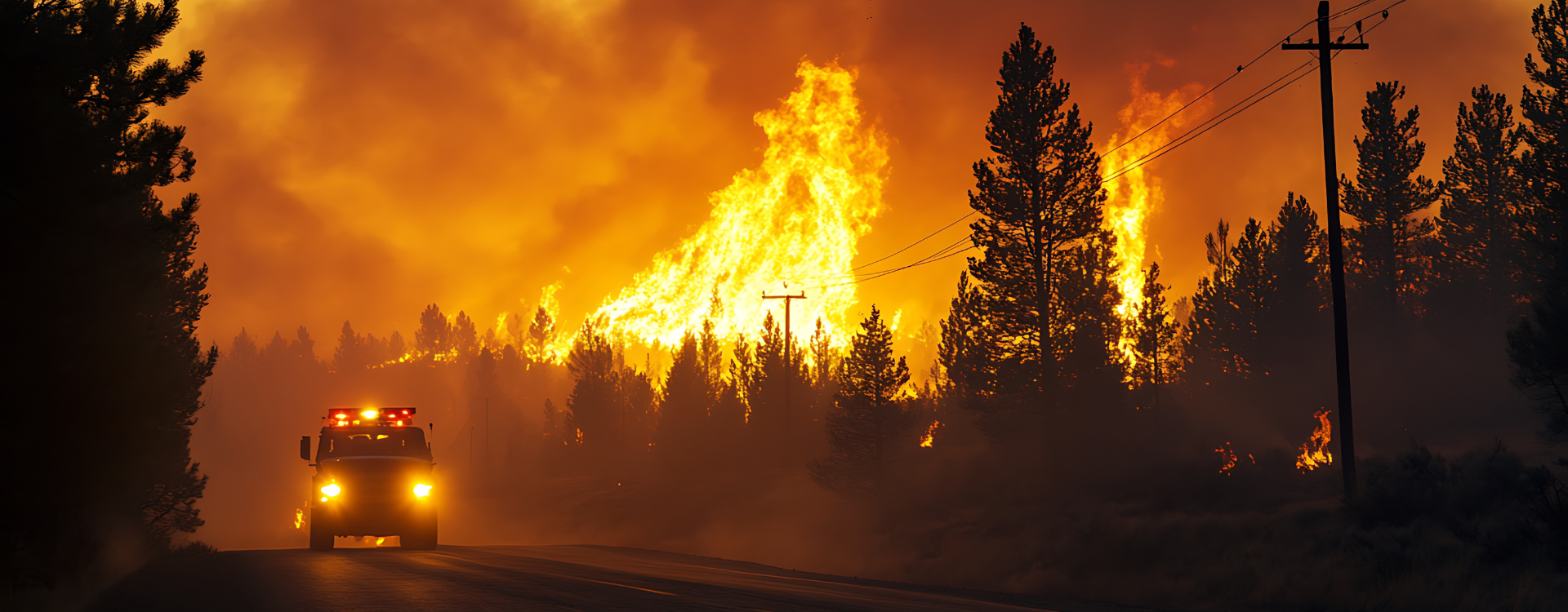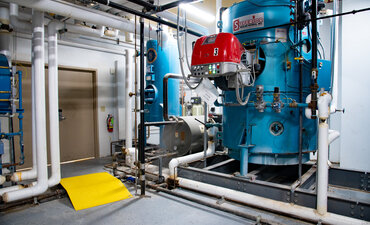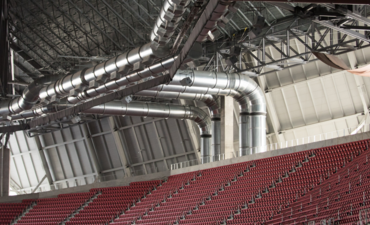
Sponsored by the Network of Employers for Traffic Safety, Drive Safely Work Week is an annual campaign aimed at reinforcing safe driving practices among employees. As wildfires become more frequent, especially in locations where Southland operates, it is important to adjust our safety measures to better protect our workforce.
Driving near wildfire-prone areas brings unique challenges, including low visibility and unpredictable road conditions. Kerry Roney, Regional Safety Director, stressed the importance of adopting safe driving practices to protect our employees and others when navigating these hazardous conditions.
Understanding the risks of driving in wildfire smoke
Hot, dry, and windy conditions fuel wildfires across the United States, with wildfire seasons varying by region. In Texas, where Kerry is based, wildfire season can last all year.
Driving during wildfires poses several risks: reduced visibility, road hazards from debris, high winds that can spread fires, and congested roads due to evacuations. These challenges are especially difficult for commercial service and construction workers, who often transport equipment and operate on tight schedules.
"Safety is a part of everything we do. In the face of wildfires, safe driving is your lifeline. Keep calm, stay inside your vehicle, seal all openings, and move cautiously. Your vigilance and preparation can turn a perilous journey into a safe escape," Kerry said.
Pre-planning for routes in wildfire smoke
Whenever possible, avoid driving in wildfire conditions. However, for commercial and construction workers, alternative routes may not always be available. Here are some pre-planning tips:
Preparing for departure
Before heading out, check the weather and road conditions. Make sure your phone is fully charged for emergencies.
Vehicle housekeeping
Conduct a 360-degree inspection of your vehicle, checking tires, brakes, and headlights.
“Regular vehicle housekeeping is essential for safety. Clear your windows and mirrors and secure any loose items like trash or tools that could become dangerous during a drive,” Kerry explained.
Pack supplies
Prepare an emergency kit with water, first aid supplies, flashlights, and non-perishable food.
"Pre-planning for a wildfire is your road to safety. Knowing your evacuation routes, preparing your vehicle, and staying informed can make all the difference when every moment counts. Be ready, act early, and drive with confidence to protect yourself and your loved ones," Kerry added.
Driving safely in wildfire smoke
When facing a wildfire, act swiftly and safely:
"Your prompt action and preparedness can save lives. Drive safely, stay informed, and prioritize early evacuation to avoid the dangers of wildfires," Kerry said.
Post-drive assessment
After driving through wildfire conditions, it is important to evaluate your route once you are safely out of the hazardous area. This includes the following steps:
Inspect your vehicle
Thoroughly check your vehicle for any damage or signs of wear, including clogged air filters, ash buildup, and tire damage.
Report hazards
If you encounter any new hazards, report them immediately to local authorities and your company’s safety team.
Debrief with your safety team
Discuss the conditions you faced, any challenges encountered, and lessons learned with your local safety team. This feedback is crucial for improving safe driving training within the organization.
"After a wildfire, avoid ash, debris, and downed power lines. Follow public health guidelines, wear protective gear like long sleeves, goggles, and an N95 mask, and wash off any ash promptly. Your cautious actions ensure a safer recovery process," Kerry said.
With over 1,000 drivers and vehicles, the safety of our employees is our top priority. While wildfires are unpredictable, proper preparation and caution allow commercial service and construction workers to face these challenges safely.
Senior Content Marketing Strategist
As Senior Content Marketing Strategist for Southland Industries, Lindsay Janssen manages the content lifecycle. From ideation, creation, and editing through distribution, measurement and maintenance, and creating content strategy, Lindsay develops new and innovative ideas for Southland's digital channels.




